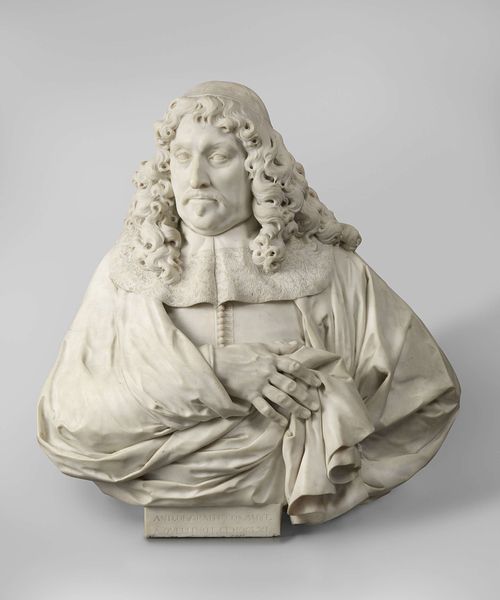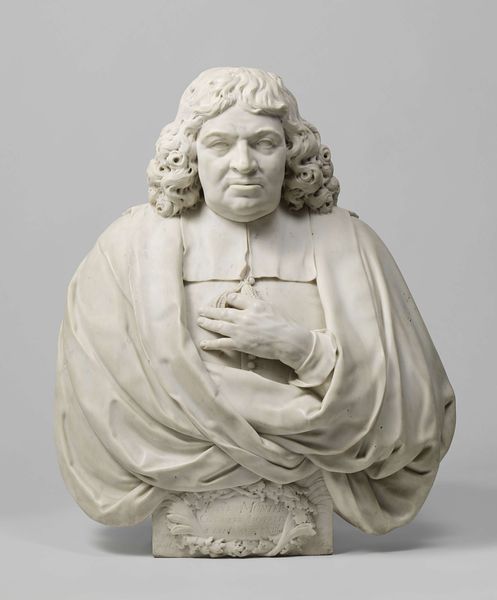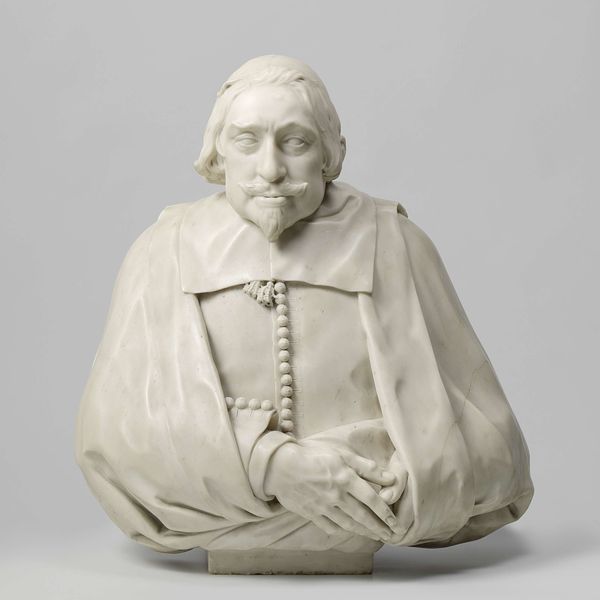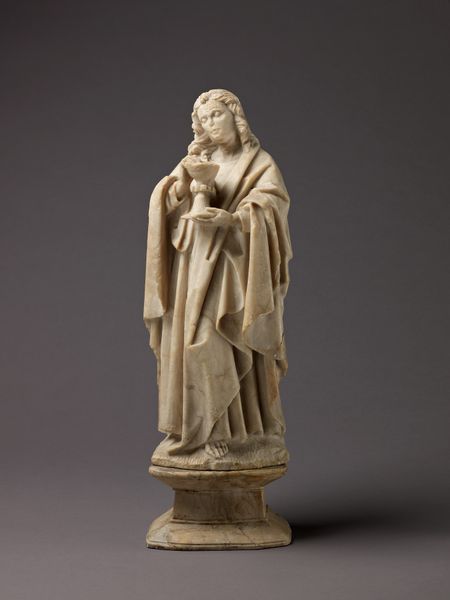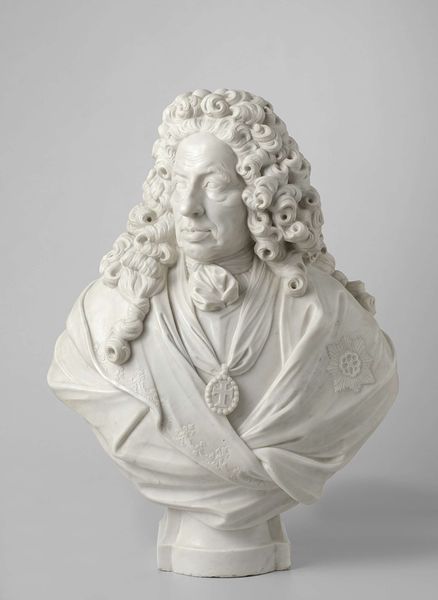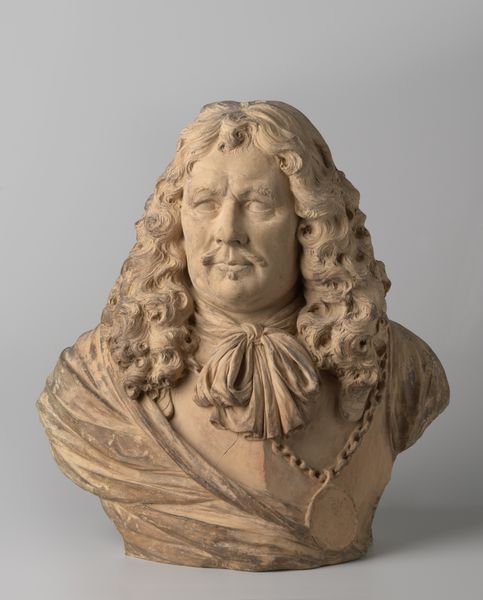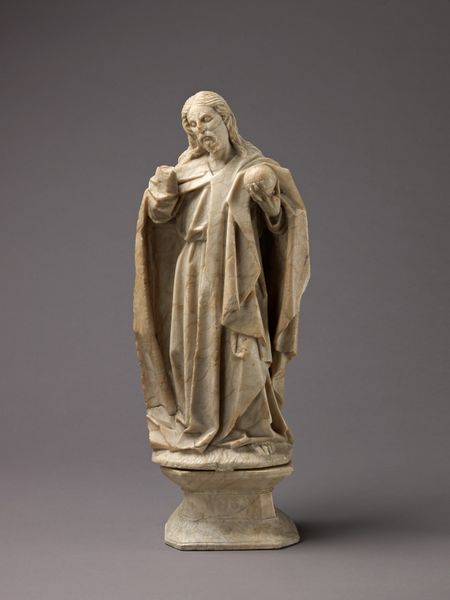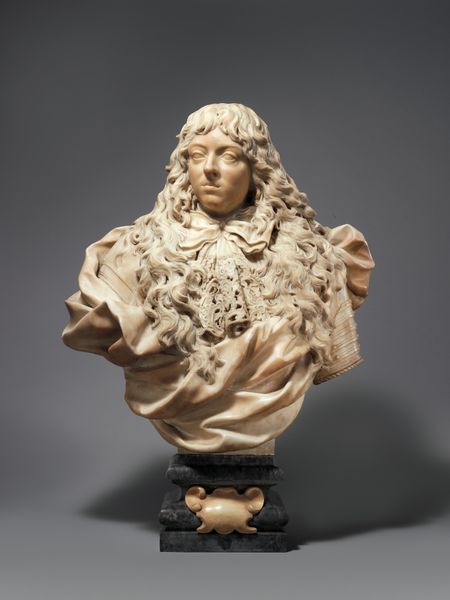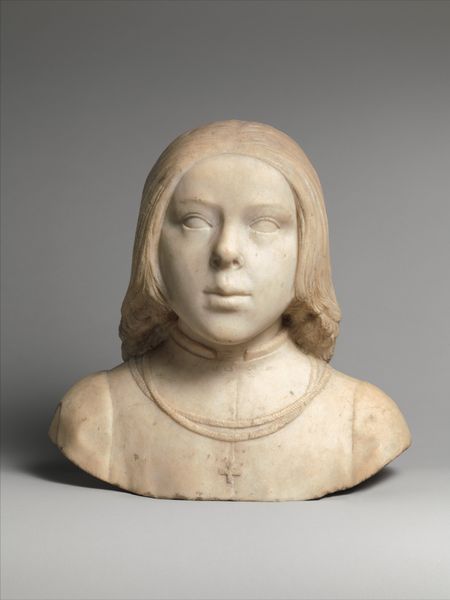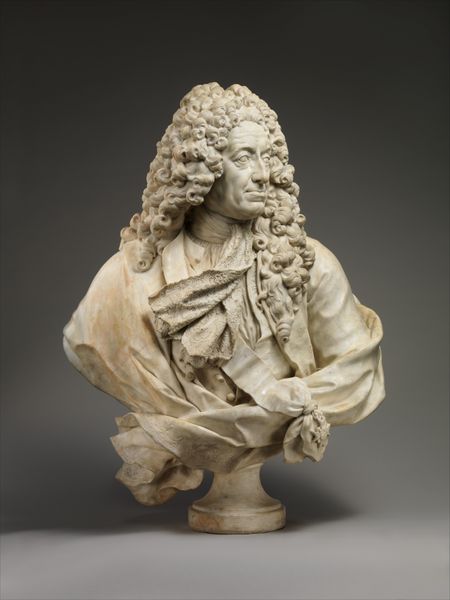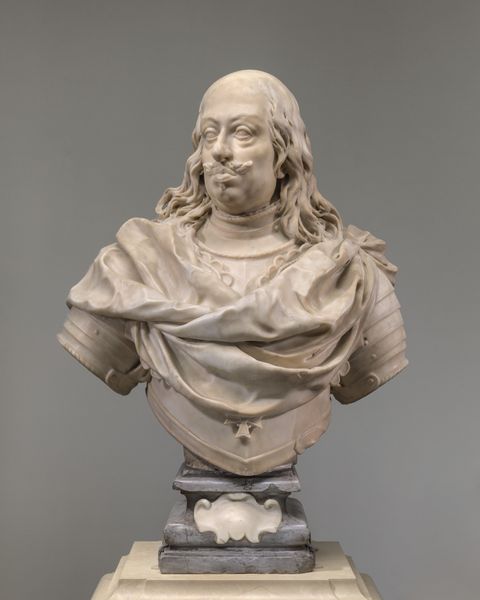
brass, metal, sculpture, marble
#
portrait
#
brass
#
baroque
#
metal
#
sculpture
#
figuration
#
sculpture
#
marble
#
statue
Dimensions: height 85 cm, width 74 cm, depth 38 cm, weight 95 kg
Copyright: Rijks Museum: Open Domain
Editor: Here we have Artus Quellinus' marble "Portrait of Johan de Witt" from 1665. The detail is just incredible, particularly the hair. It's so lifelike, even though it’s frozen in stone. The man seems… reserved. What do you see when you look at this piece? Curator: Oh, there’s a whole world swirling beneath that serene surface, I assure you! Quellinus has captured something essential about de Witt, not just his physical likeness. Notice how the heavy drapery seems to weigh him down, even as it speaks to his status. Marble, for all its coolness, is incredibly sensual – feels almost wrong to touch it, doesn’t it? What strikes you about the *contrast* between that formal attire and the incredibly tactile quality of the marble itself? Editor: Well, it feels like a performance of power…but perhaps an uncomfortable one. He seems almost burdened. Curator: Precisely! It's that tension between public image and inner state, carved in stone, of course. Power back then had so much to do with that tightrope walk. Think about the historical context: de Witt was a major political player. This bust, then, isn’t *just* a portrait; it's a statement, carefully crafted, designed to project a certain image, and that image had real implications. Do you think it achieves its aim? Does he seem imposing to you, despite the... melancholy? Editor: Not particularly imposing, no. The melancholy sort of undercuts the effect. I actually feel a little bad for him. Curator: And there it is! That's the magic of art, isn't it? To see a human being, even through the formal trappings of power and history. Quellinus managed to inject a little doubt into the stone, a little humanity, don’t you think? Editor: I definitely do. It's been insightful to think about it not just as a sculpture, but as a carefully constructed projection of power, as well as a subtle, almost subversive statement.
Comments
rijksmuseum about 2 years ago
⋮
The last bust that Quellinus made in Amsterdam was this portrait of Johan de Witt, Grand Pensionary of Holland and the most powerful man in the Dutch Republic. De Witt was related to and a kindred spirit of the leading Amsterdam regent families. After he and his brother were assassinated in 1672, this bust was used to make various casts, which found their way into the homes of his admirers.
Join the conversation
Join millions of artists and users on Artera today and experience the ultimate creative platform.
